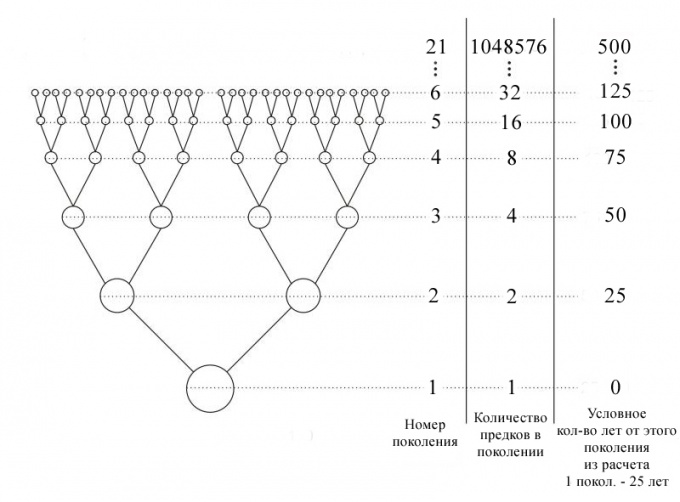You will need
- calculator
Instruction
1
Divide any member of a progression on the previous one. If the value of the previous value is unknown or undefined (for example, the first member of the progression), then divide by any member of the sequence the value of the next member of the progression.
As a member of a geometric progression is not equal to zero when performing this operation should not cause problems.
As a member of a geometric progression is not equal to zero when performing this operation should not cause problems.
2
Example.
Suppose we have a sequence of numbers:
10, 30, 90, 270...
You want to find the denominator of a geometric progression.
Solution:
Option 1. We will take a random value (e.g., 90) and divide it by the previous (30): 90/30=3.
Option 2. Take any member of a geometrical progression (for example, 10) and divide by it later (30): 30/10=3.
Answer: the denominator of the geometric progression 10, 30, 90, 270... is set to 3.
Suppose we have a sequence of numbers:
10, 30, 90, 270...
You want to find the denominator of a geometric progression.
Solution:
Option 1. We will take a random value (e.g., 90) and divide it by the previous (30): 90/30=3.
Option 2. Take any member of a geometrical progression (for example, 10) and divide by it later (30): 30/10=3.
Answer: the denominator of the geometric progression 10, 30, 90, 270... is set to 3.
3
If the values of members of a geometrical progression is not clearly specified, but in the form of ratios, write and solve a system of equations.
Example.
The sum of the first and the fourth member of a geometric progression is equal to 400 (b1+b4=400), and the sum of the second and the fifth member is equal to 100 (b2+b5=100).
It is required to find the denominator of the progression.
Solution:
Write down the problem statement in the form of a system of equations:
b1+b4=400
b2+b5=100
From the definition of geometric progression implies that:
b2=b1*q
b4=b1*q^3
b5=b1*q^4, where q is the common designation of the denominator of a geometric progression.
Substituting in the equations the values of the members of the progression, we get:
b1+ b1*q^3=400
b1*q+ b1*q^4=100
After factorization, it turns out:
b1*(1+q^3)=400
b1*q(1+q^3)=100
Now divide the corresponding part of the second equation into the first:
[b1*q(1+q^3)] / [b1*(1+q^3)] = 100/400, where q=1/4.
Example.
The sum of the first and the fourth member of a geometric progression is equal to 400 (b1+b4=400), and the sum of the second and the fifth member is equal to 100 (b2+b5=100).
It is required to find the denominator of the progression.
Solution:
Write down the problem statement in the form of a system of equations:
b1+b4=400
b2+b5=100
From the definition of geometric progression implies that:
b2=b1*q
b4=b1*q^3
b5=b1*q^4, where q is the common designation of the denominator of a geometric progression.
Substituting in the equations the values of the members of the progression, we get:
b1+ b1*q^3=400
b1*q+ b1*q^4=100
After factorization, it turns out:
b1*(1+q^3)=400
b1*q(1+q^3)=100
Now divide the corresponding part of the second equation into the first:
[b1*q(1+q^3)] / [b1*(1+q^3)] = 100/400, where q=1/4.
4
If you know the amount of several members of a geometrical progression or the sum of all of the members of the decreasing geometric progression, to find the denominator of the progression use the appropriate formulas:
Sn = b1*(1-q^n)/(1-q), where Sn – sum of n first members of the geometric progression and
S = b1/(1-q), where S is the sum of infinitely decreasing geometric progression (sum of all members of the progression with denominator smaller units).
Example.
The first member of the decreasing geometric progression is equal to one and the sum of all of its members equal to two.
You want to determine the denominator of this progression.
Solution:
Substitute the data from the task into the formula. Work:
2=1/(1-q), where q=1/2.
Sn = b1*(1-q^n)/(1-q), where Sn – sum of n first members of the geometric progression and
S = b1/(1-q), where S is the sum of infinitely decreasing geometric progression (sum of all members of the progression with denominator smaller units).
Example.
The first member of the decreasing geometric progression is equal to one and the sum of all of its members equal to two.
You want to determine the denominator of this progression.
Solution:
Substitute the data from the task into the formula. Work:
2=1/(1-q), where q=1/2.


